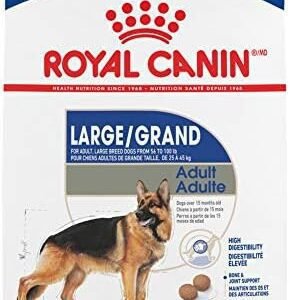Azithromycin is a widely-used macrolide antibiotic that veterinarians frequently prescribe to treat various bacterial infections in dogs. Understanding the proper dosage calculations is crucial for effective treatment while minimizing the risk of adverse effects. This comprehensive guide will help veterinary professionals and pet owners understand how to calculate appropriate azithromycin doses for dogs.
Dog Azithromycin Dosage Calculator
IMPORTANT: Azithromycin is a prescription-only antibiotic. This calculator is for reference only. Always follow your veterinarian's specific dosing instructions and only use with a valid prescription.
Recommended Dosage
Important Instructions:
- Complete the entire prescribed course
- Give with or without food
- Space doses evenly throughout the day
- Store at room temperature
Monitor for Side Effects:
- Vomiting or diarrhea
- Loss of appetite
- Lethargy
- Allergic reactions
Contact your veterinarian immediately if you notice any concerning symptoms.
Do Not Use If Your Dog:
- Has liver disease
- Is allergic to macrolide antibiotics
- Is taking certain medications
- Is pregnant or nursing
Understanding Azithromycin
Azithromycin belongs to the macrolide class of antibiotics, which work by preventing bacteria from producing essential proteins needed for their growth. It’s particularly effective against:
- Respiratory tract infections
- Skin infections
- Soft tissue infections
- Some tick-borne diseases
- Certain bacterial strains resistant to other antibiotics
Get detailed info about Azithromycin dosage and precautions here: Azithromycin for dogs
Standard Dosing Guidelines
The typical dosage range for azithromycin in dogs is 5-10 mg per kilogram of body weight, administered once daily. However, the exact dosage depends on several factors:
Primary Factors Affecting Dosage
- The type and severity of infection being treated
- The dog’s body weight and overall health status
- Any concurrent medical conditions
- Previous antibiotic exposure
- The presence of drug-resistant bacteria
Basic Dosage Calculation Formula
To calculate the appropriate azithromycin dose for a dog:
- Convert the dog’s weight to kilograms (if in pounds, divide by 2.2)
- Multiply the weight in kilograms by the prescribed dose rate (usually 5-10 mg/kg)
- Round to the nearest practical dose based on available formulations
Example Calculations
For a 44-pound dog:
- Convert to kg: 44 ÷ 2.2 = 20 kg
- At 5 mg/kg: 20 × 5 = 100 mg daily
- At 10 mg/kg: 20 × 10 = 200 mg daily
Available Formulations
Azithromycin comes in various forms, each with its advantages:
Oral Tablets
- 250 mg tablets (most common)
- 500 mg tablets
- 600 mg tablets
Oral Suspension
- 100 mg/5 mL
- 200 mg/5 mL
The choice of formulation often depends on the calculated dose and the ease of administration for the particular patient.
Duration of Treatment
Standard treatment durations typically range from 3-10 days, depending on the condition being treated:
- Respiratory infections: 5-7 days
- Skin infections: 7-10 days
- Tick-borne diseases: May require longer courses
Special Considerations and Adjustments
Liver Disease
Dogs with compromised liver function may require dose adjustments:
- Consider reducing the dose by 25-50%
- Monitor liver enzymes during treatment
- Increase the interval between doses if needed
Kidney Disease
While azithromycin is primarily eliminated through the liver, dogs with kidney disease may need adjusted doses:
- Monitor kidney function during treatment
- Consider alternative antibiotics if severe kidney dysfunction exists
Age-Related Adjustments
- Puppies: May require careful dose calculations based on their rapidly changing weight
- Senior dogs: May need lower doses due to decreased organ function
Monitoring and Safety
Signs of Proper Dosing
- Improvement in clinical signs within 48-72 hours
- No significant adverse effects
- Completion of the prescribed course
Warning Signs of Overdose
- Severe gastrointestinal upset
- Lethargy
- Loss of appetite
- Jaundice
- Unusual behavior changes
Practical Tips for Administration
Timing Considerations
- Administer at the same time each day
- Can be given with or without food
- If giving with food, ensure consistent timing relative to meals
Measuring Liquid Formulations
- Use proper measuring devices (oral syringes or calibrated droppers)
- Shake suspension well before measuring
- Clean measuring devices between uses
Common Mistakes to Avoid
Incorrect Weight Conversion
- Always double-check pound-to-kilogram conversions
- Use digital scales when possible for accurate weights
Improper Dose Rounding
- Round to the nearest practical dose
- Consider splitting tablets when necessary
- Never guess at measurements
Inconsistent Administration
- Missing doses
- Incorrect timing between doses
- Stopping treatment early
Record Keeping
Maintaining accurate records is crucial for proper dosing:
Essential Information to Record
- Dog’s accurate weight
- Calculated dose
- Administration times
- Response to treatment
- Any adverse effects
- Follow-up appointments
When to Seek Professional Help
Contact a veterinarian immediately if:
- Adverse reactions occur
- No improvement is seen within 72 hours
- The condition worsens
- New symptoms develop
Get detailed info about Azithromycin dosage and precautions here: Azithromycin for dogs
Conclusion
Accurate dosage calculation of azithromycin for dogs is crucial for effective treatment and safety. While this guide provides comprehensive information about dosage calculations, always consult with a veterinarian before starting, adjusting, or discontinuing any antibiotic treatment. They can provide specific guidance based on your dog’s individual needs and circumstances.
Remember that antibiotic resistance is a serious concern in both human and veterinary medicine. Always follow your veterinarian’s instructions precisely, complete the full course of treatment as prescribed, and never use leftover antibiotics without professional guidance.
























